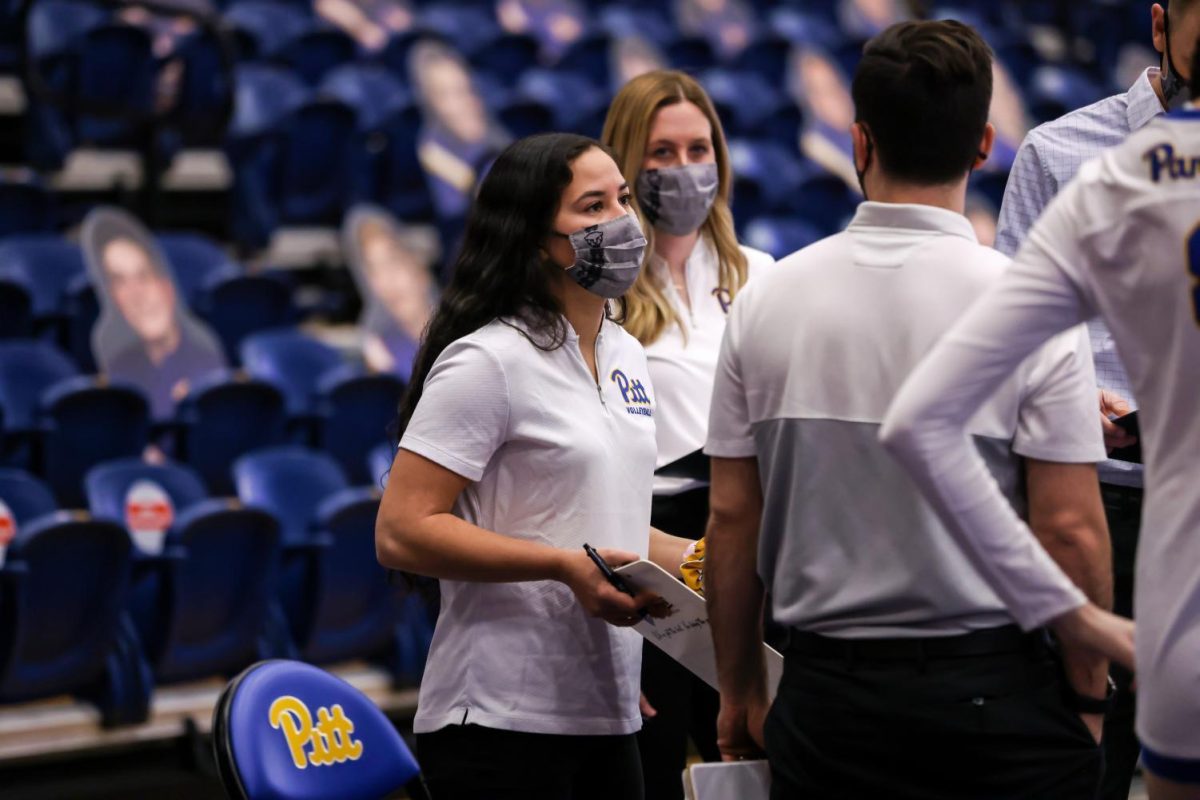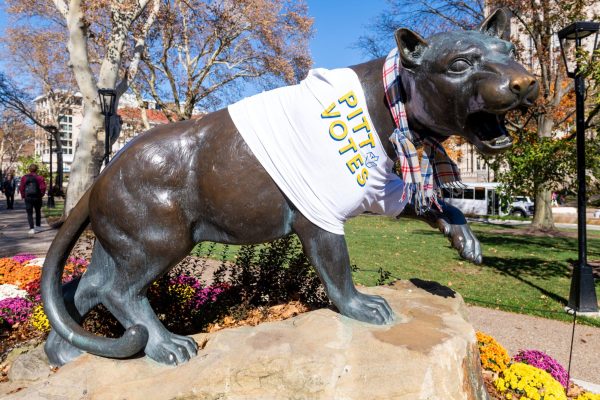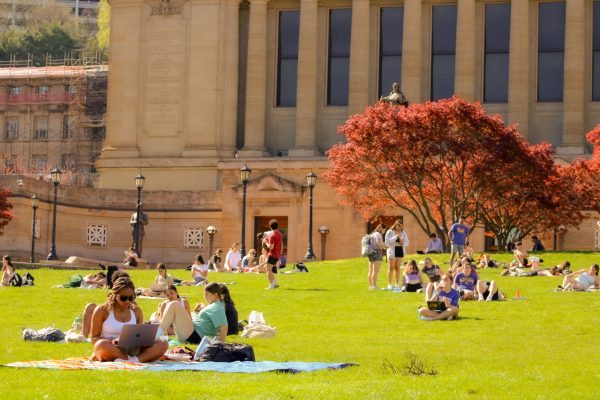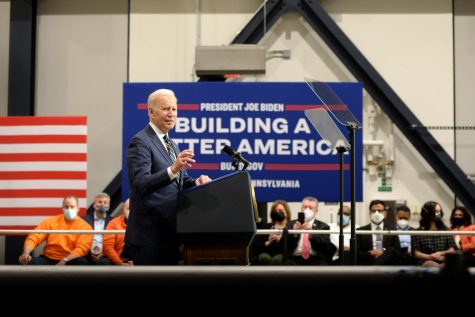Pitt is a hotspot for international students, report shows
September 10, 2014
Pitt is known to express its diversity. Take the iconic Cathedral of Learning, which has 30 nationality rooms created to celebrate cultures around the world.
According to a 2014 Global Cities Initiative report from the Brookings Institution and JPMorgan Chase, Pitt is a top destination for foreign students. Last year, there were 2,780 foreign students enrolled at Pitt with 625 undergraduate and 2,155 graduate students.
Pittsburgh is among the top 20 metropolitan destinations for foreign students, by ranking 15 out of 118 metros, according to the report.
The majority of foreign students at Pitt come from China, India and South Korea, according to the Pitt’s Office of Institutional Research 2013-2014 Fact Book.
For Ali Balubaid, a student from Saudi Arabia, Pitt was a “top spot” because of its bioengineering program.
“As for the Saudi population, many of them attend Pitt because it is very good in physical therapy,” said Balubaid a freshman bioengineer. “Plus there is a very diverse, international student body here.”
In a 2012 ICEF Monitor report, Essam M. Al Khathlan, a researcher from the Academic Expert Office in Saudi Arabia, said that a large part of the Saudi population is interested in studying in the U.S. not only to learn English but also to study physiotherapy and sports medicine.
Balubaid considered studying in Saudi Arabia but was deterred because bioengineering was not offered at the undergraduate level.
Balubaid applied to 10 universities in the U.S. including Pitt, Johns Hopkins, University of California San Diego, Virginia Tech, University of Colorado, Boulder, Michigan State, Purdue and Penn State. He left his family in Saudi Arabia, but he said he will return over summer break.
He chose Pitt over his other top choices — Purdue and Penn State — and said he is adjusting well to Pittsburgh and hasn’t found many problems here because the community is “very friendly and open to students.”
“If I wasn’t living in this dorm I would have more international student [friends],” Balubaid said. “Sutherland West makes me feel included. We always socialize here by hanging out in the hallway.”
Learning English was not a problem for Balubaid — he learned to speak Arabic and English at the same time. What took some adjusting was the cultural difference relating to gender, he said. “Boys don’t really communicate as much with girls in Saudi Arabia,” Balubaid said.
Additionally, Balubaid finds it hard to laugh at jokes at Pitt.
“American humor is not as funny,” Balubaid said. “It’s very bland.”
Balubaid first came to the U.S. last year after finishing high school in Saudi Arabia. Through an ESL program at Rutgers University, Balubaid studied English, took the SAT and applied to American universities within a year.
As a result, Balubaid initially didn’t interact much with other Americans but said that he now feels comfortable in his new life.
What he misses most is the heat of Saudi Arabia, where the average temperature is 77.6 degrees Fahrenheit year-round according to weatherbase.com.
Unlike Balubaid, Kim Yearwood does not miss the heat of her Barbados, which is her home country.
“I chose not to go to California because there is a lot of sun there, and it’s hot just like Barbados, and I didn’t want to be there anymore,” said Yearwood, a freshman majoring in physical therapy.
When deciding to come to college in the U.S., Yearwood looked all over the nation for the schools that had the best research, study abroad and volunteering opportunities.
Her top schools were Pitt, University of Southern California, Azusa Pacific University and University of South Florida. She said she chose Pitt because it had the best physical therapy program and offered her the best financial package.
While Shutian Shen, a freshman studying psychology and philosophy, describes Pitt as an “exciting” place, she also finds it a bit unfamiliar when compared to her home in Guangzhou, China.
“People here like to go to parties, and they like to have lots of people being together singing and dancing,” Shen said. “It’s really exciting, but sometimes I prefer having just a couple of friends staying together or enjoying personal time in the library.”
Shen said that while she likes living in Pittsburgh, she misses the food back home.
“Chinese food is more healthy, less fried and we keep the natural state of the food so that it’s more fresh,” Shen said.
Shen applied to many schools in the U.S. including Pitt, Hamilton College and University of California — Berkeley and Los Angeles. She also applied to many Ivy League schools such as Brown University, Princeton University and University of Pennsylvania.
Shen said she specifically applied to schools with high populations of Chinese students, though she has been speaking English since elementary school.
“It’s sometimes good to be in a community that has lots of people from the same place,” Shen said.
Shen made the decision to study abroad in the U.S. during her sophomore year of high school.
“I spent a year [in China] to take all of the tests and prepare all of the applications and essays,” she said.
Shen said she looked for practical factors in the schools she applied to, such as tuition and safety.
“Pittsburgh is not that crowded but is also a big city and has wonderful resources like theaters, sports events and arts,” Shen said.
Shen said she hopes to spend a lot of time exploring the many museums and art galleries in Pittsburgh in her spare time.
“Pittsburgh is also a city with lots of history,” Shen said. “There’s something very fascinating about it, like it has lots of stories to tell.”







